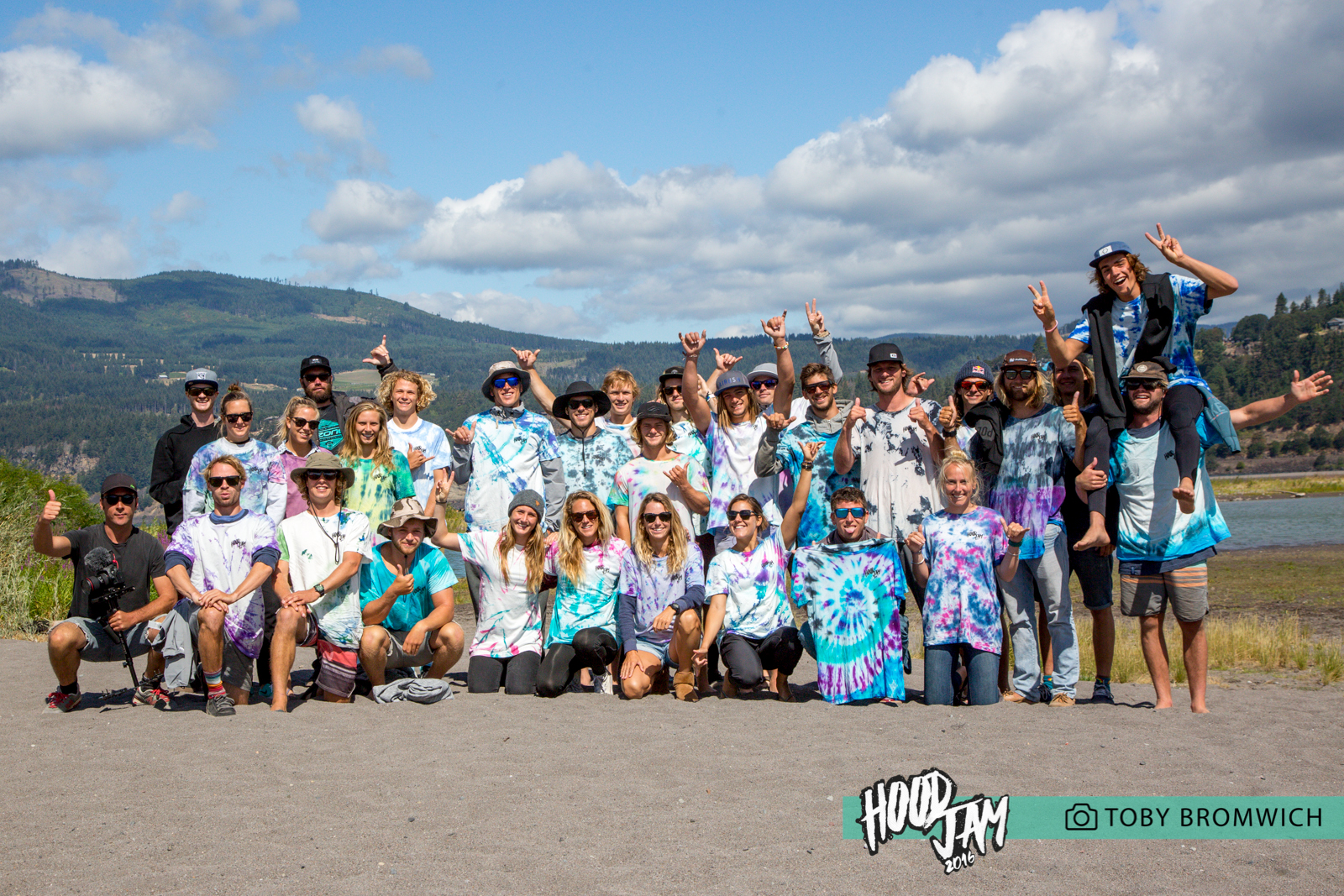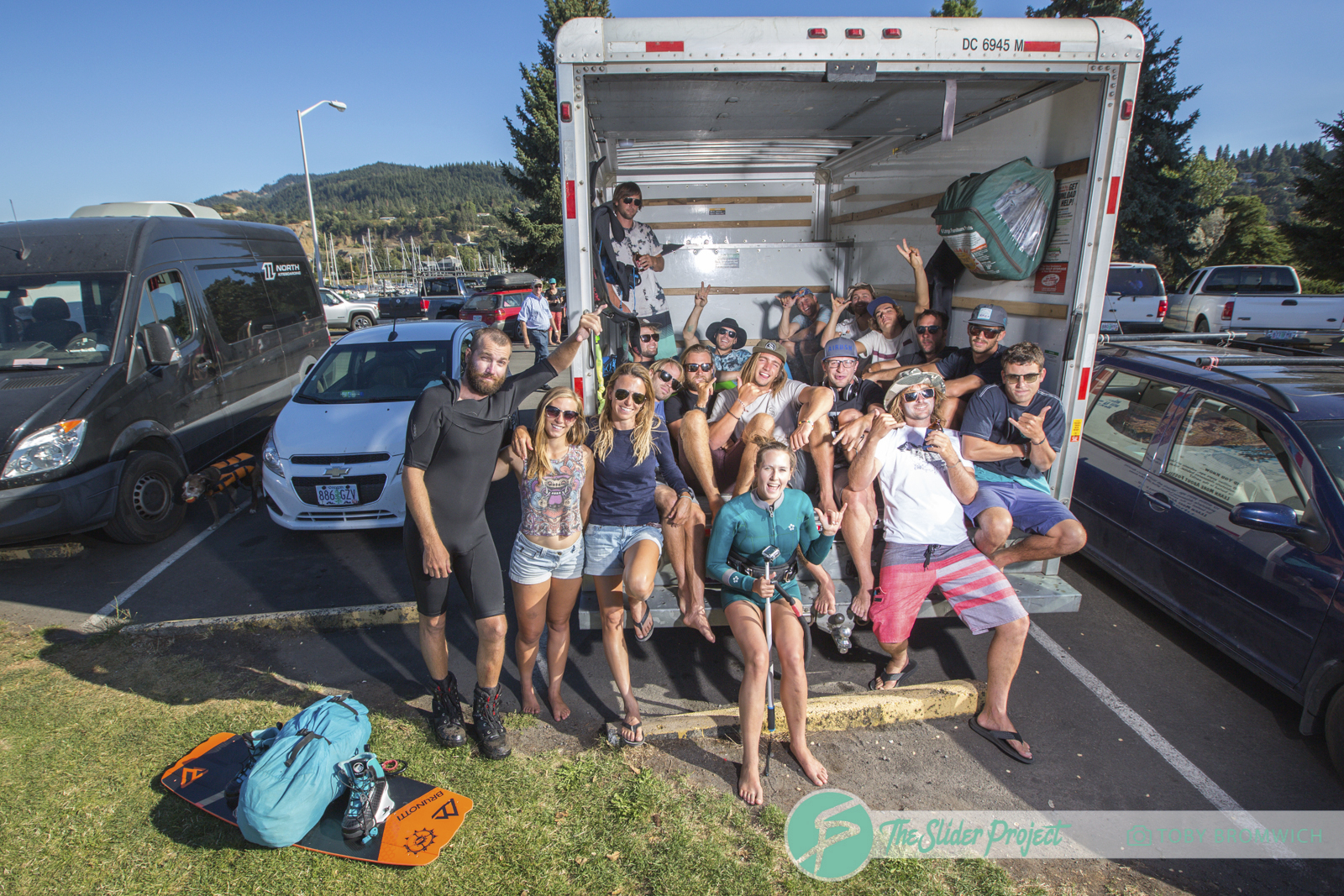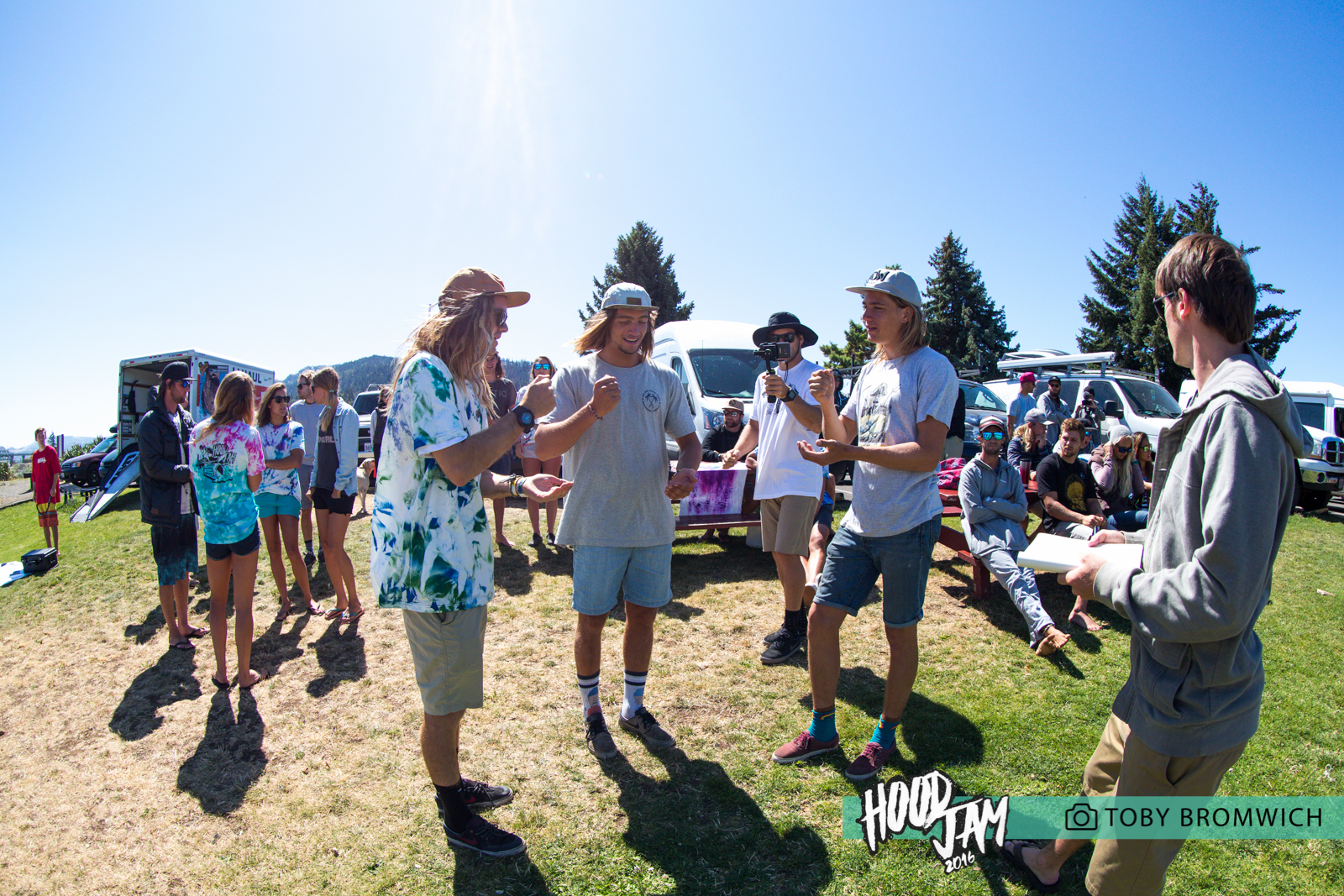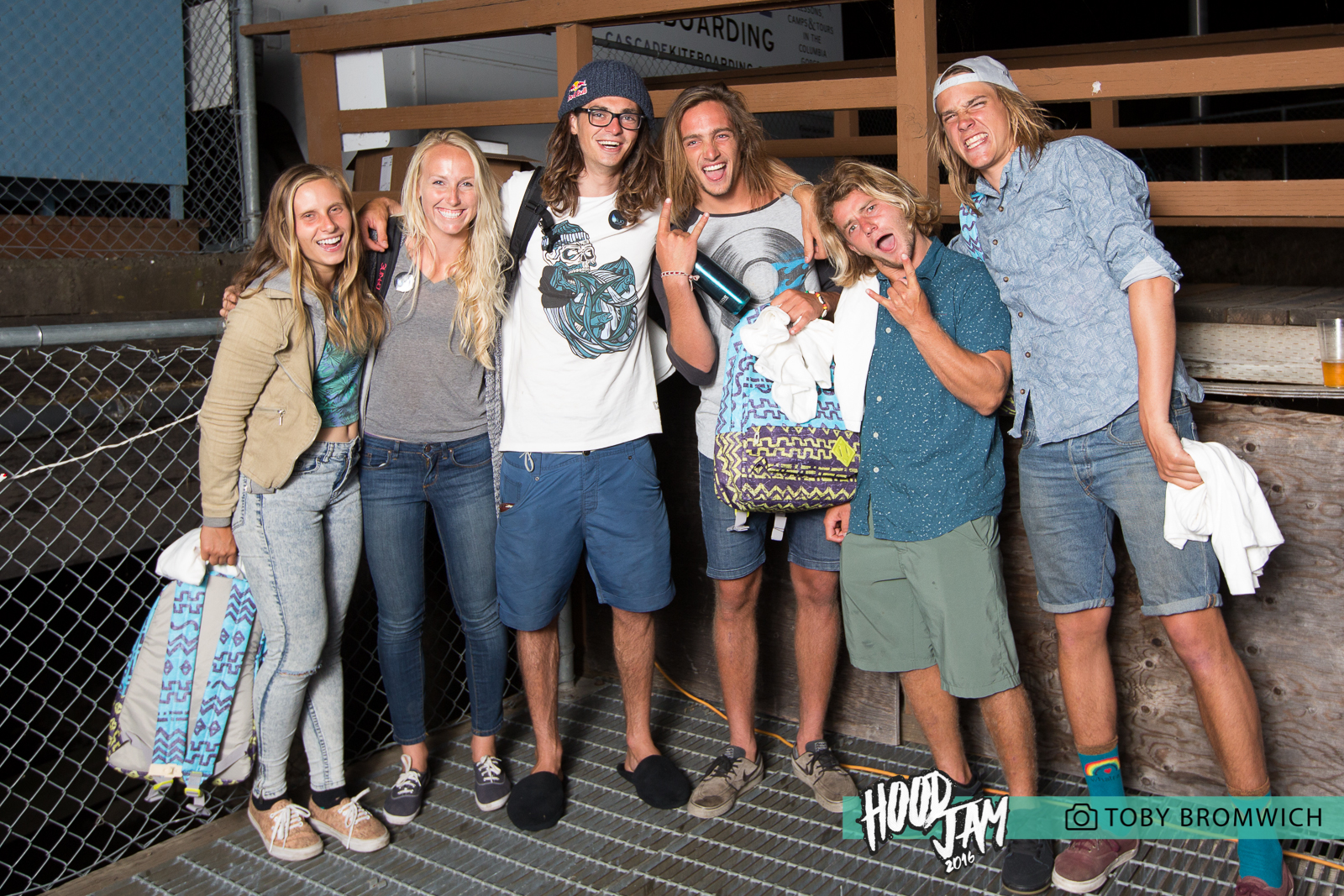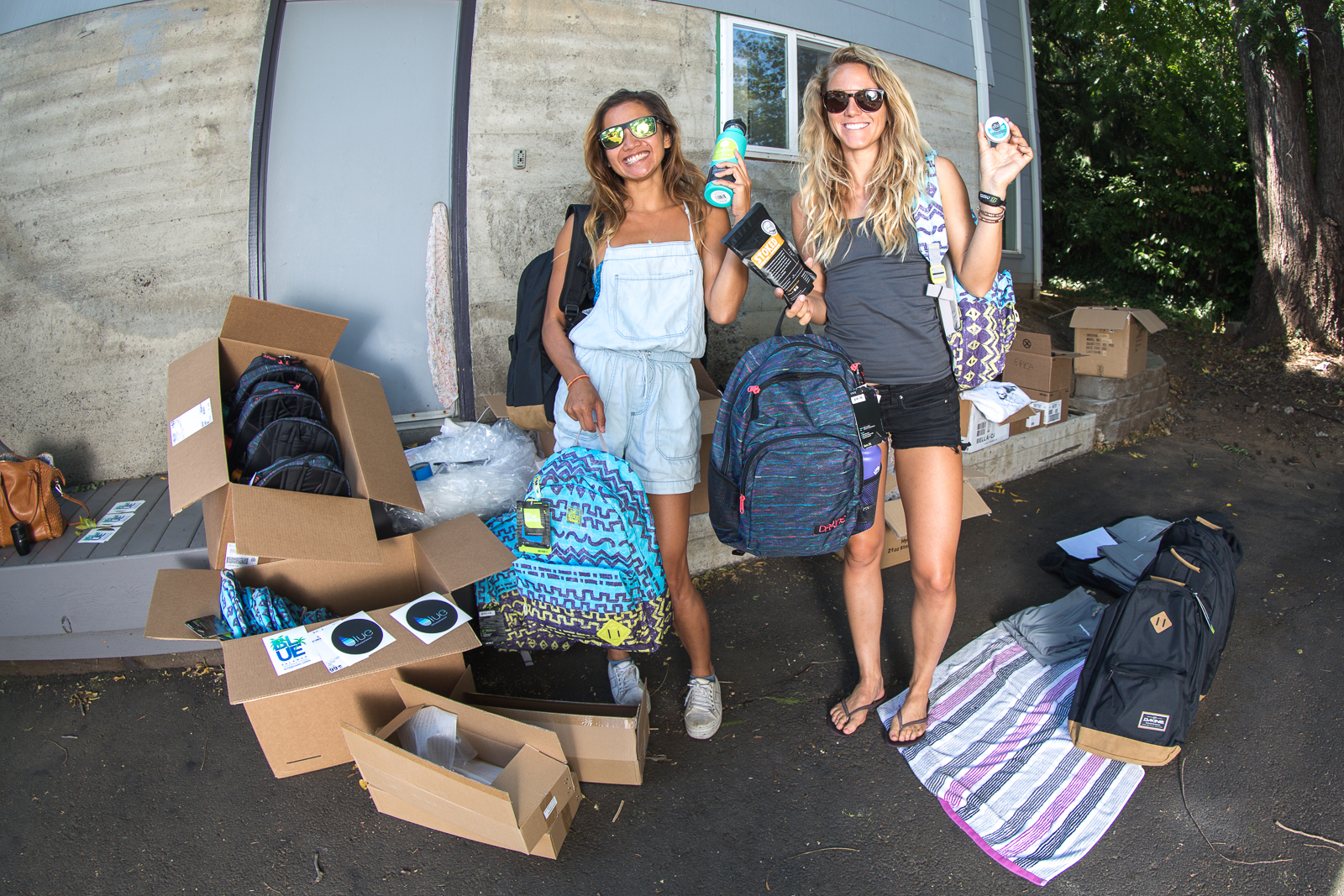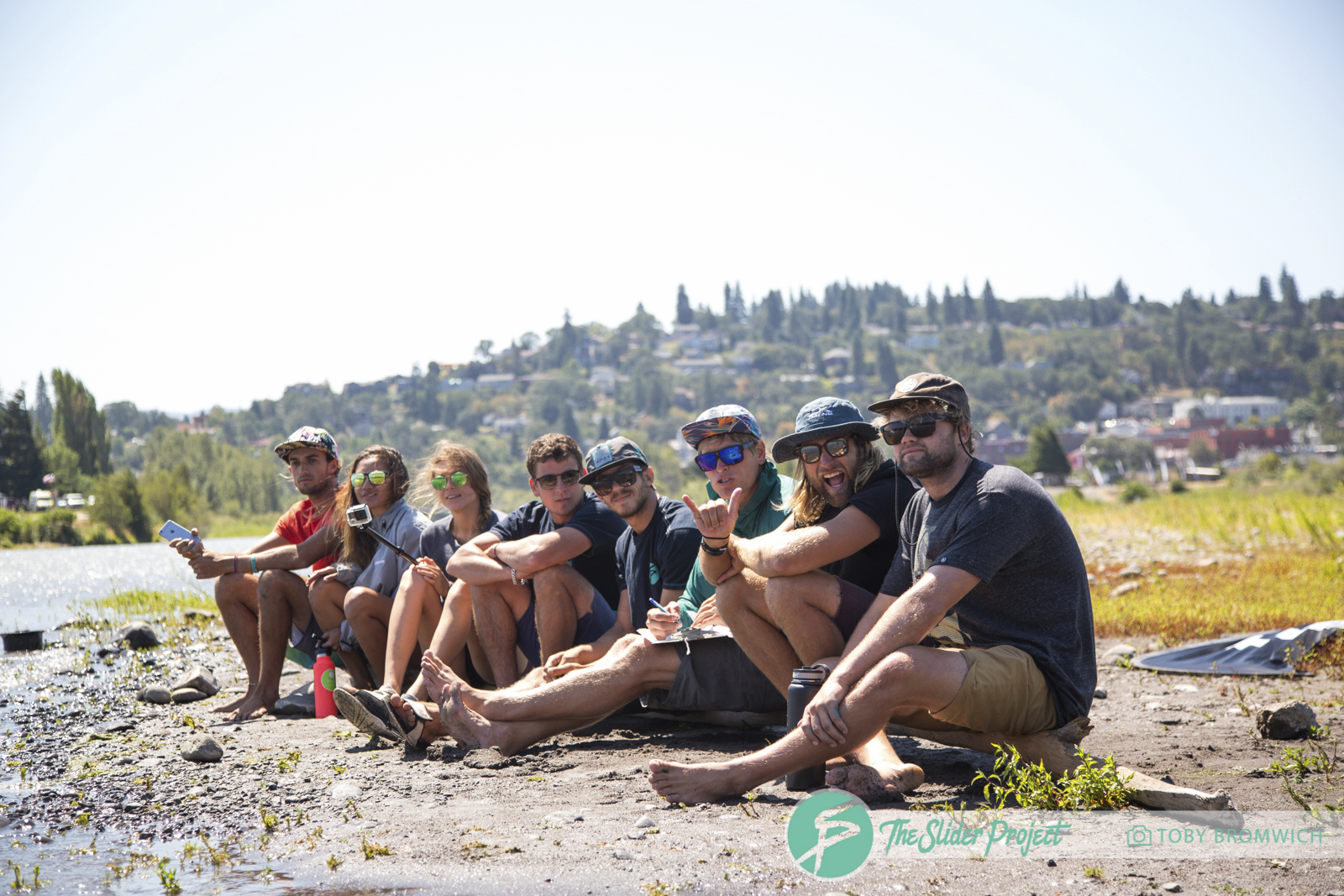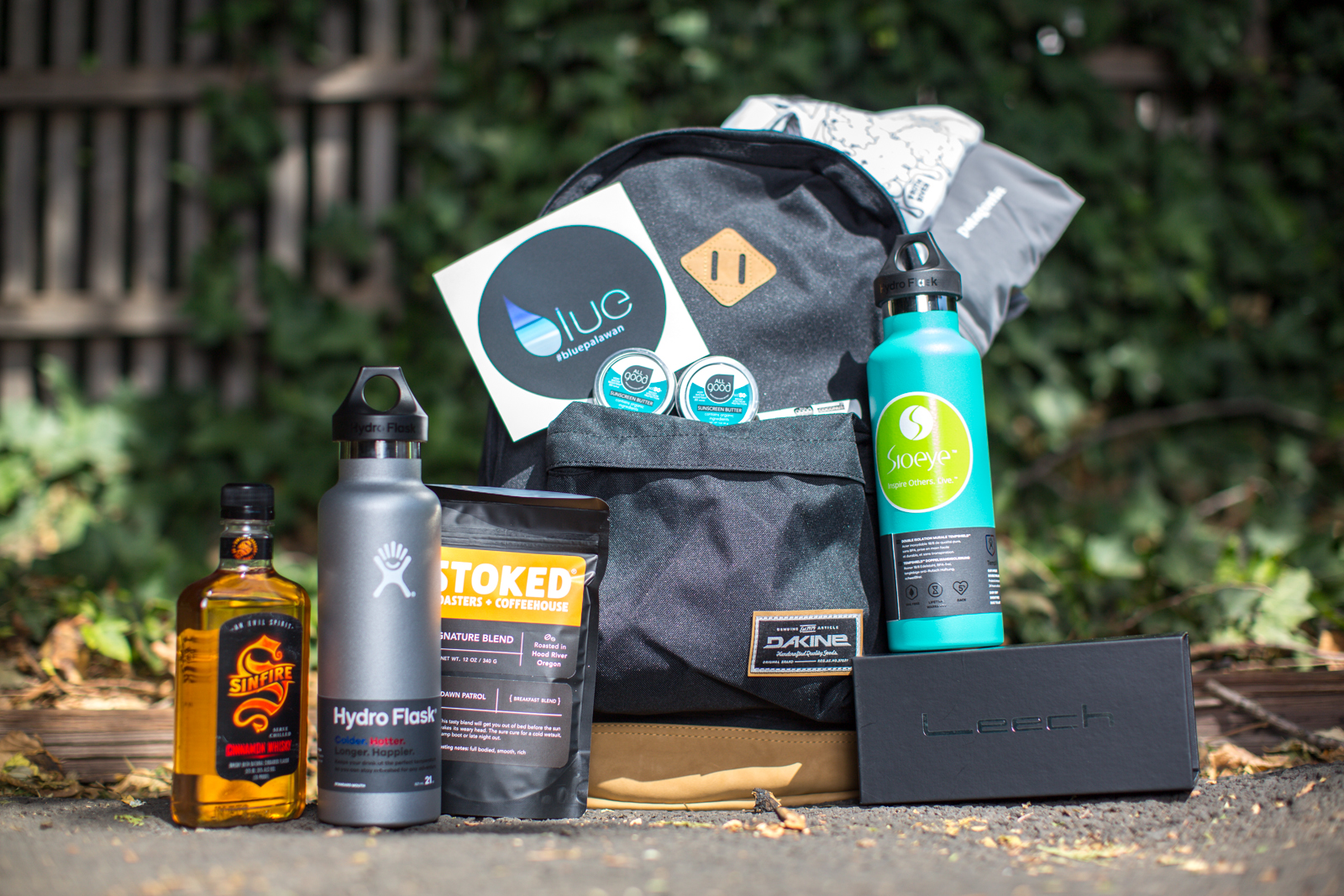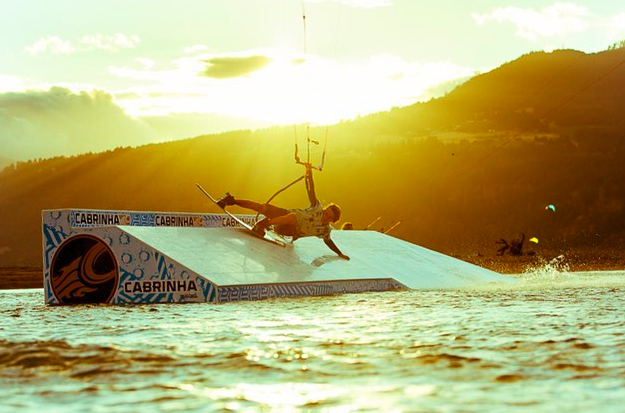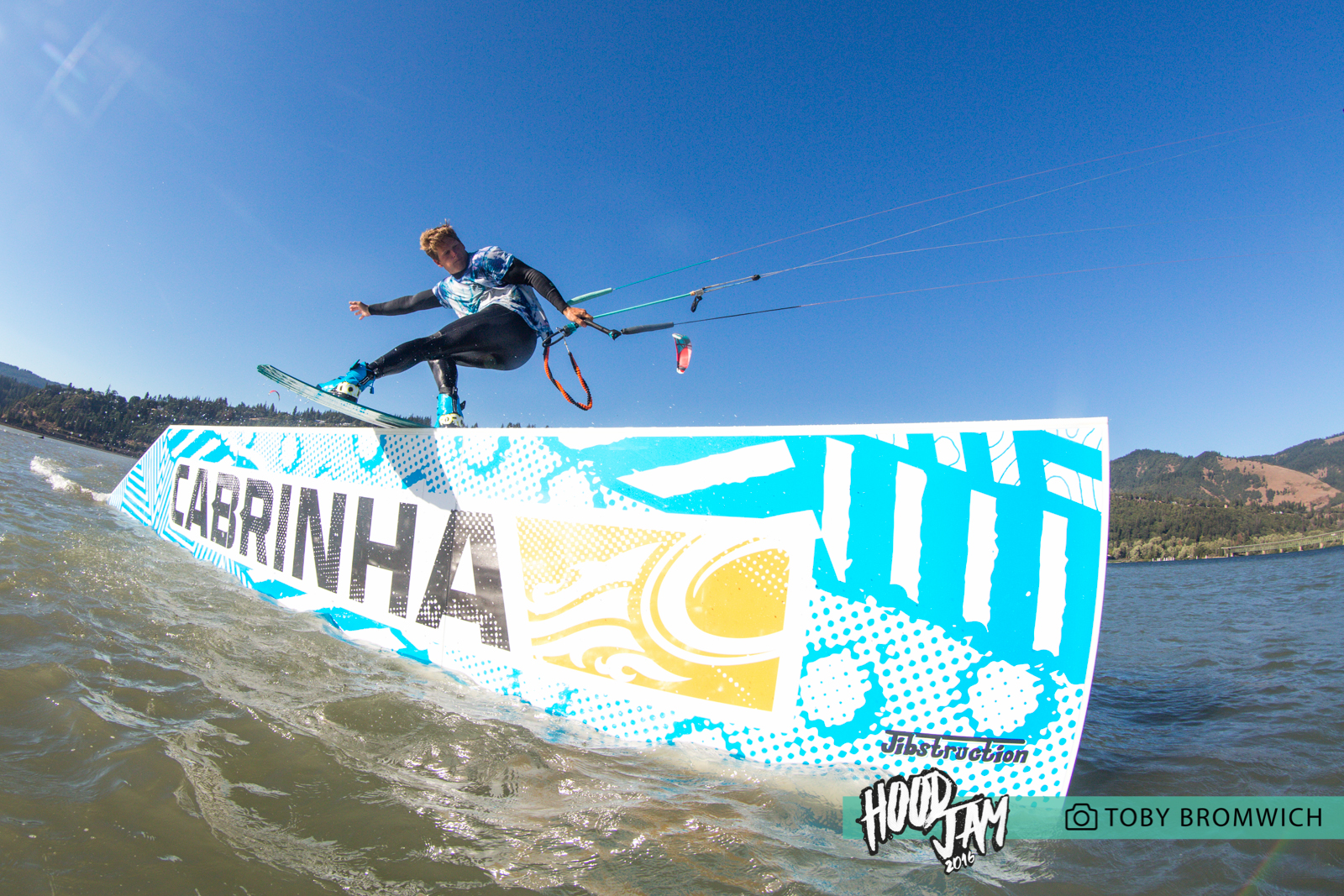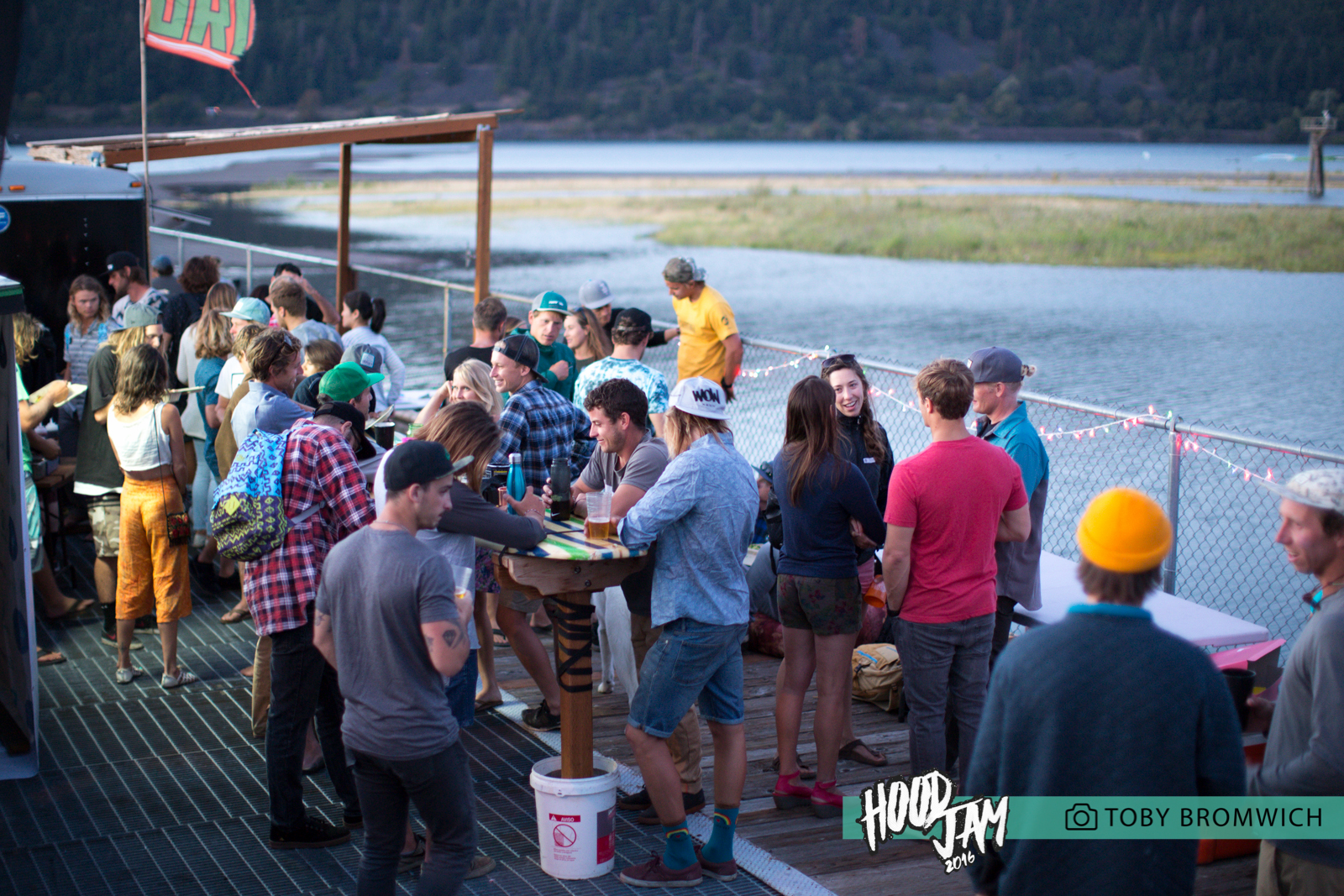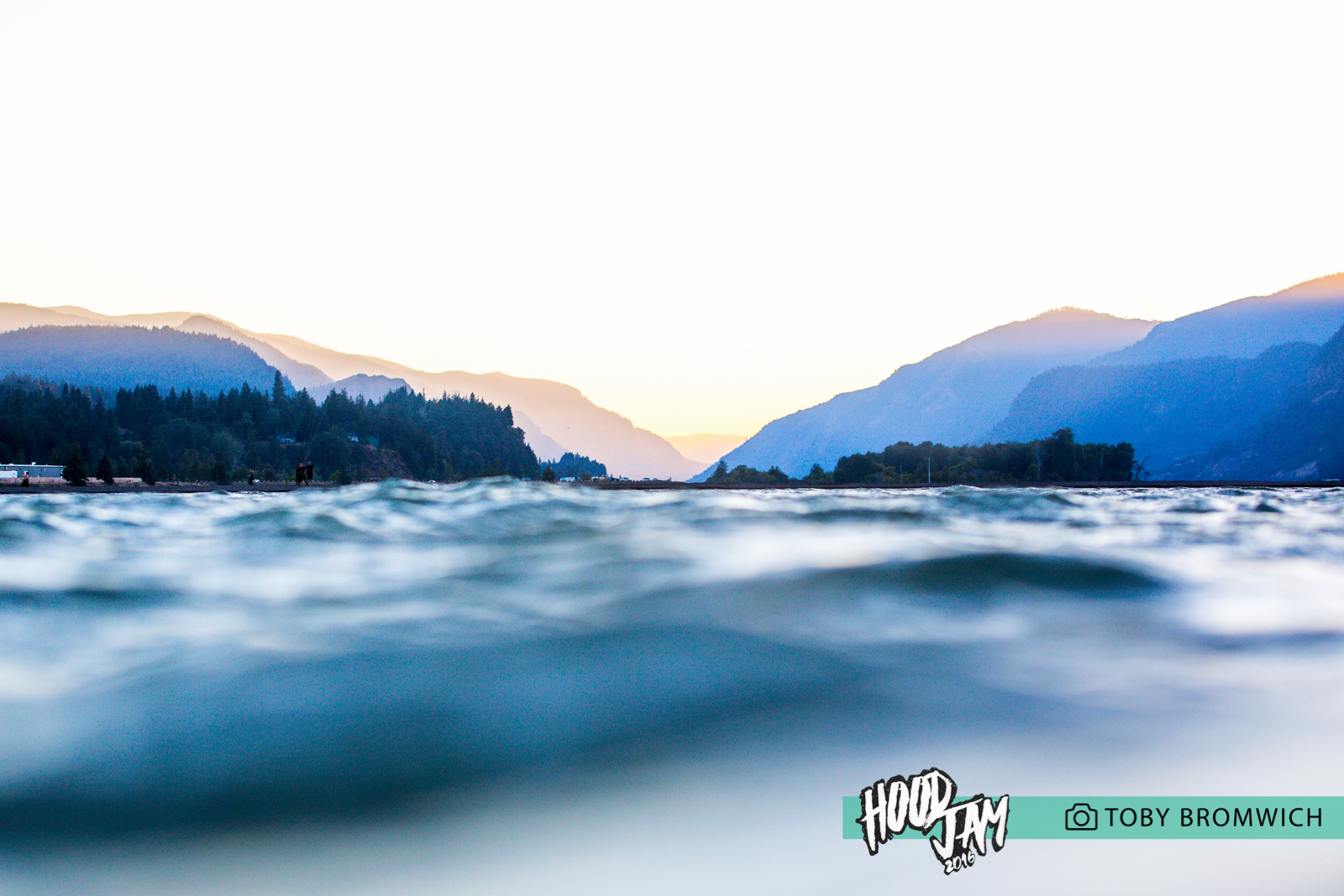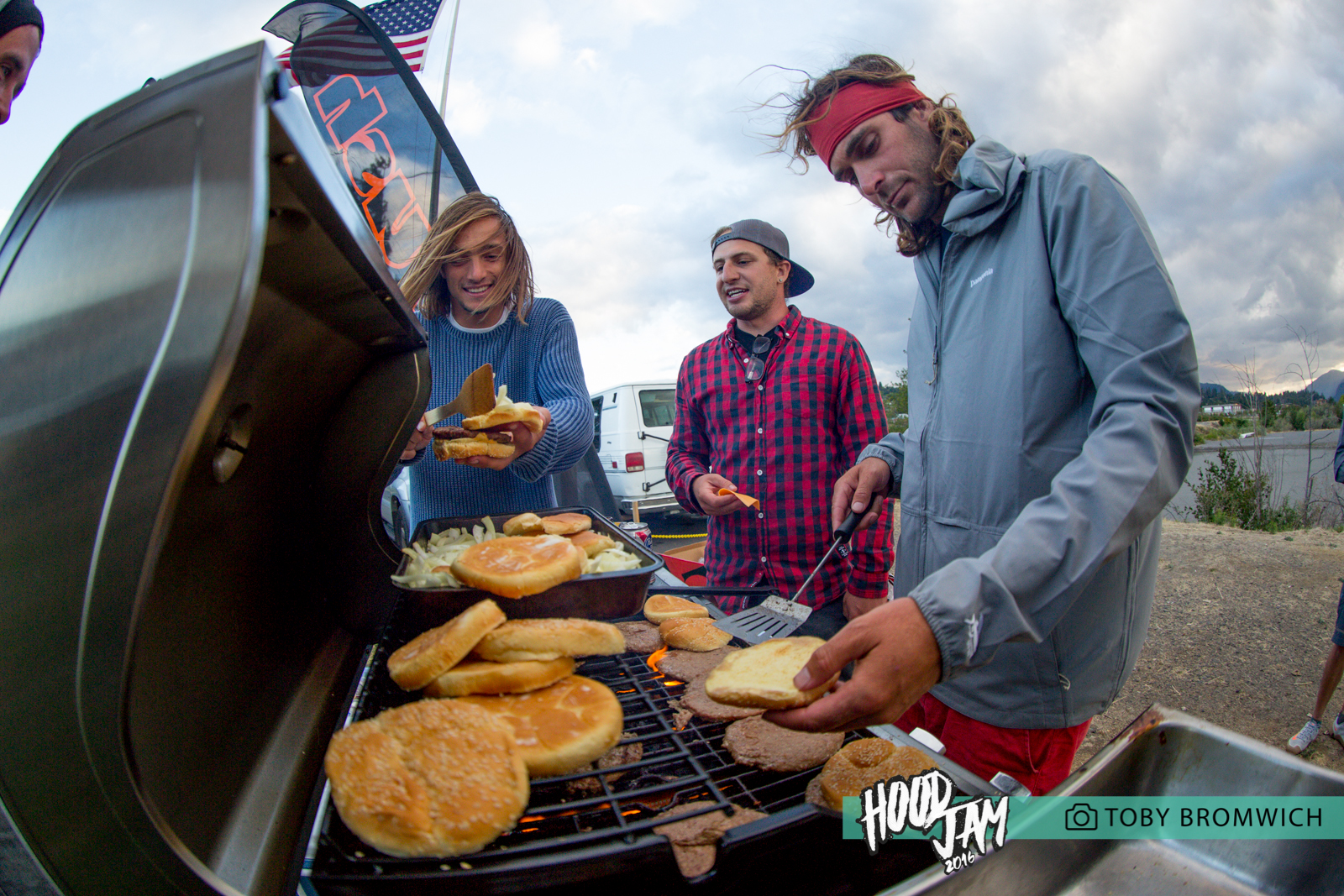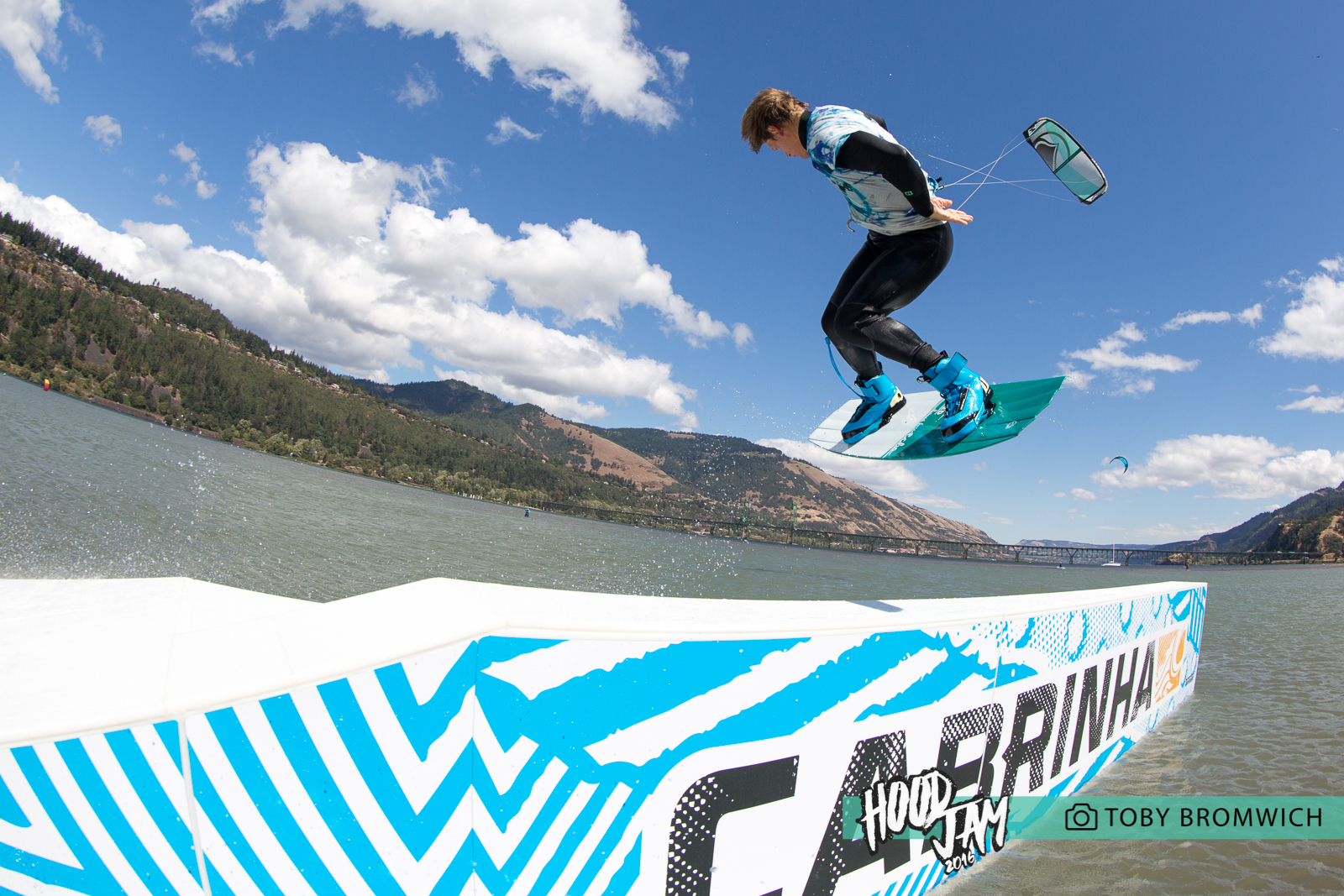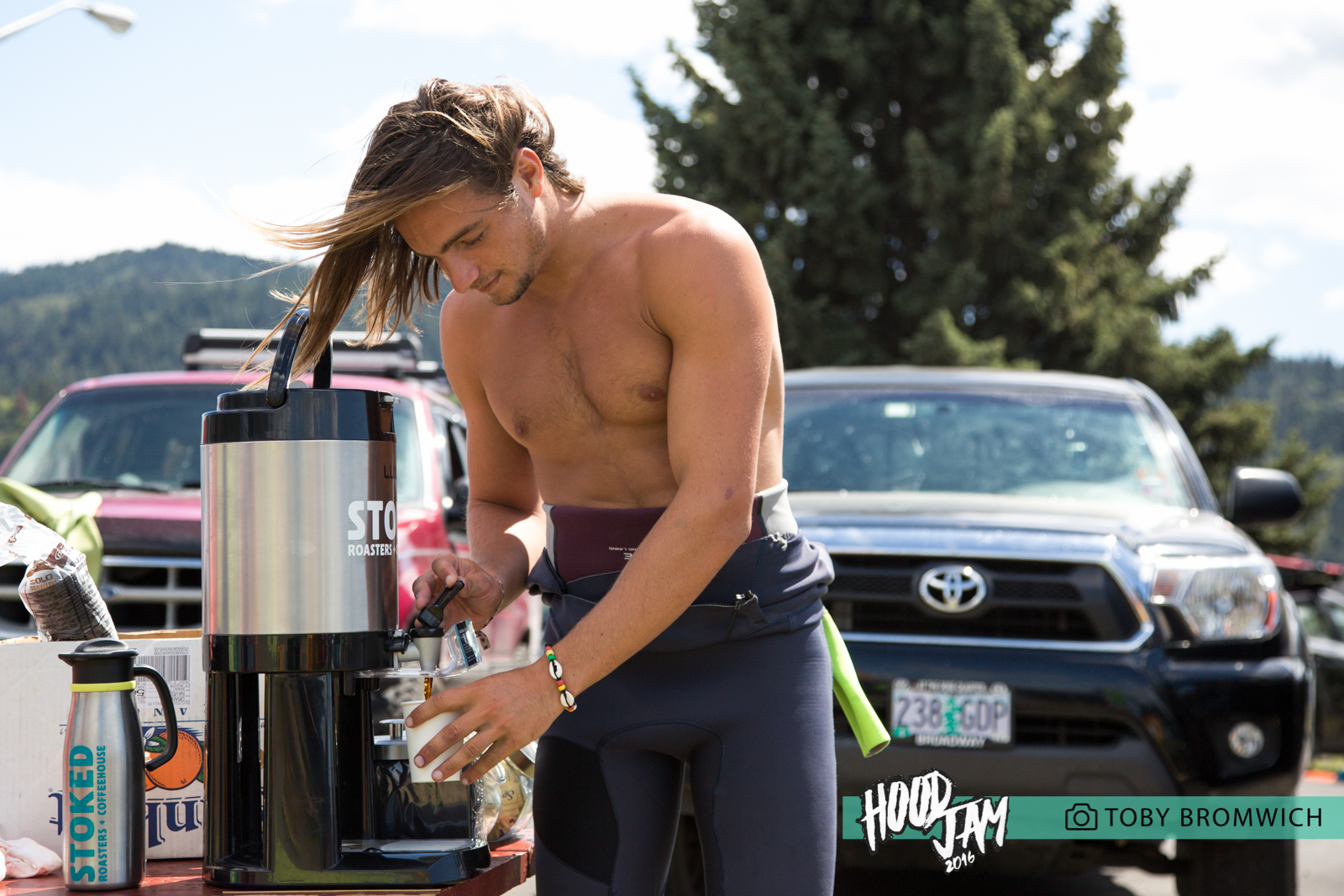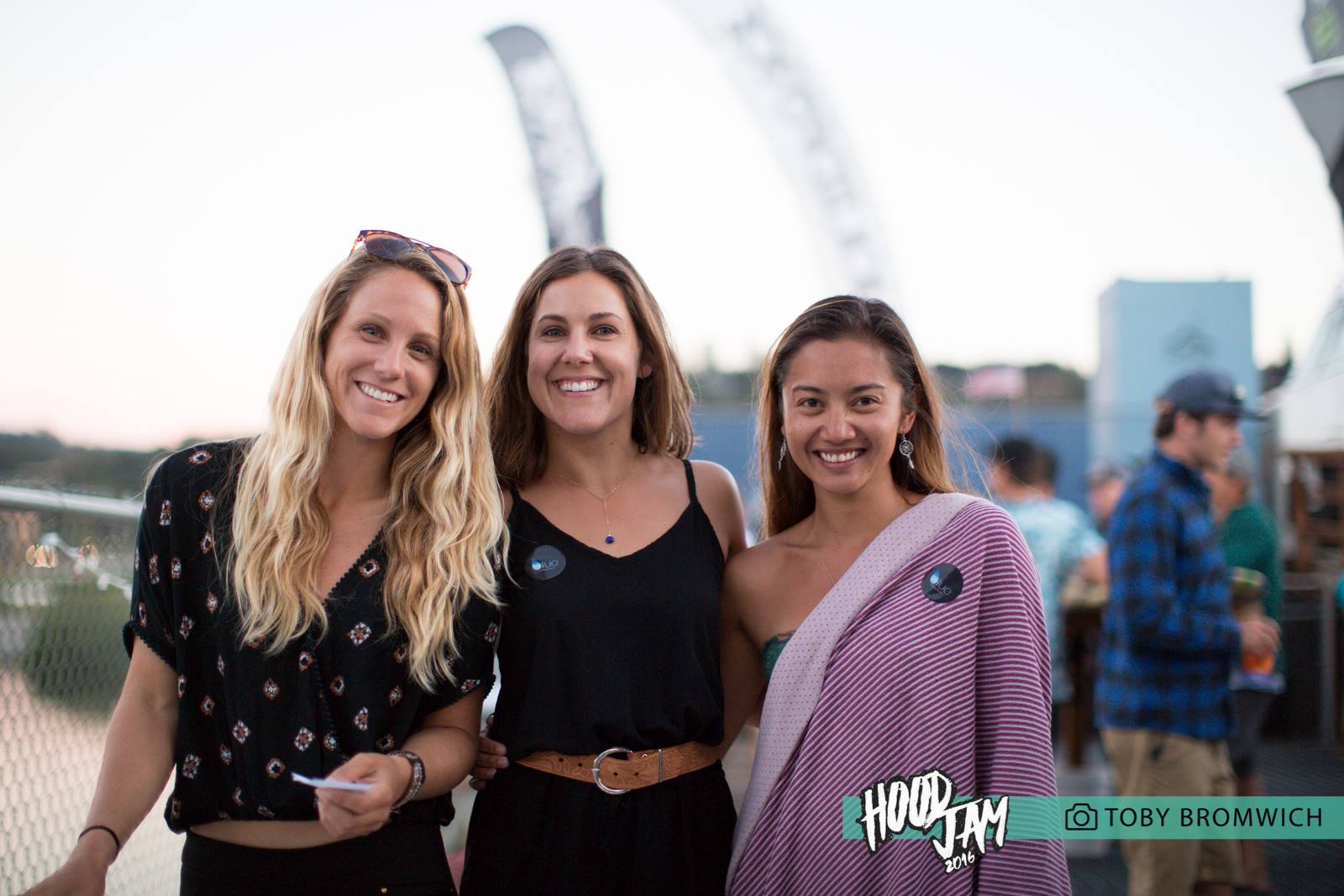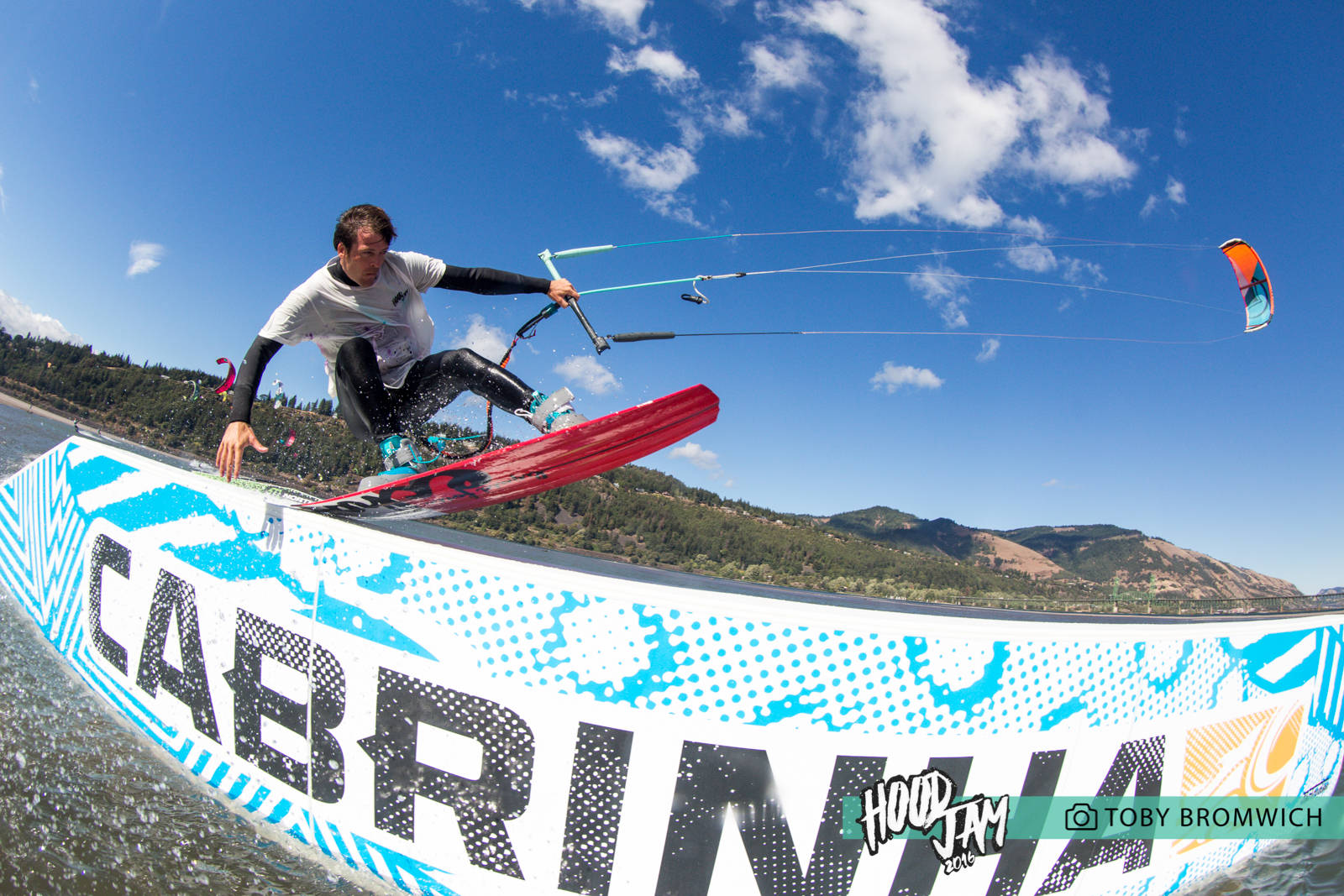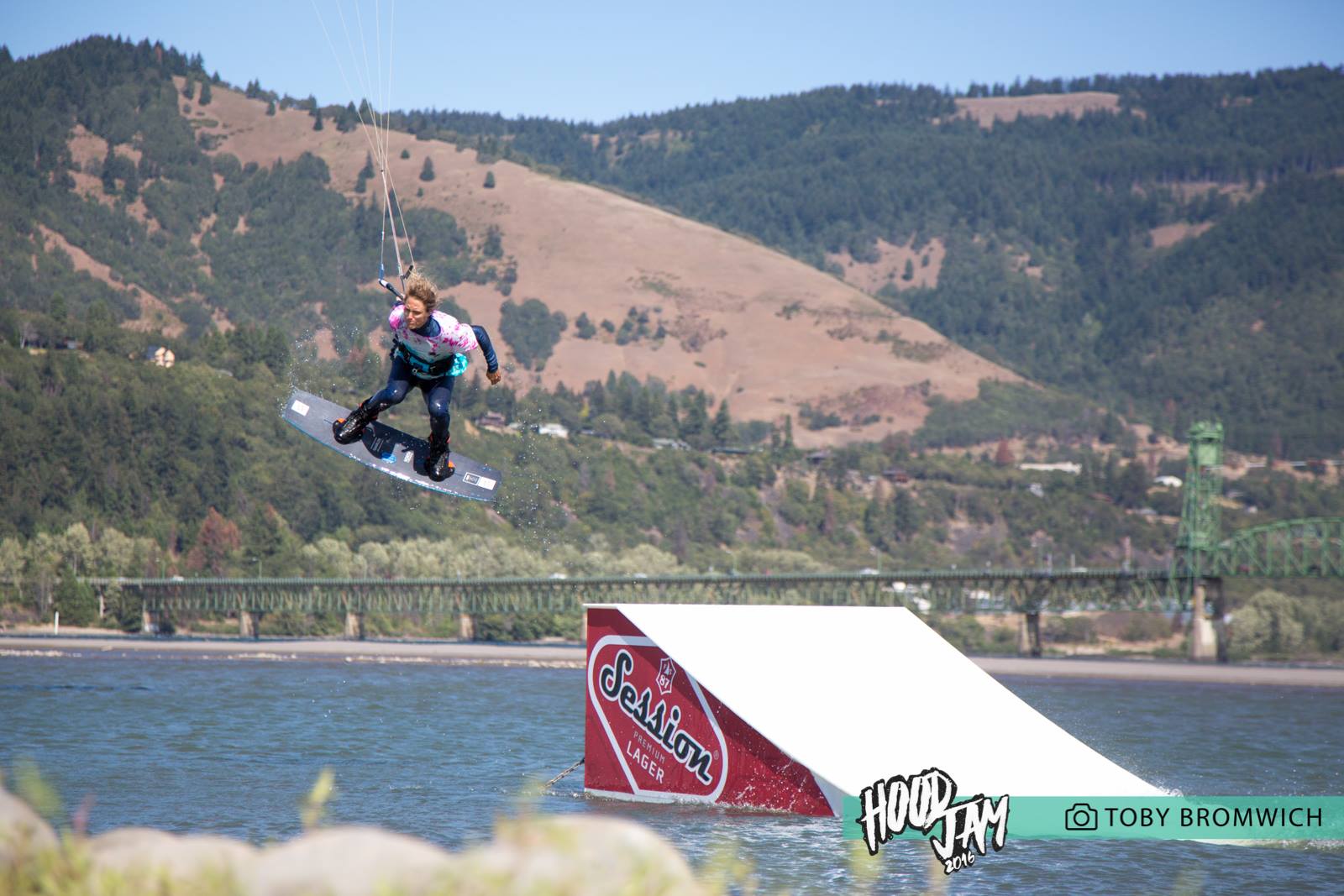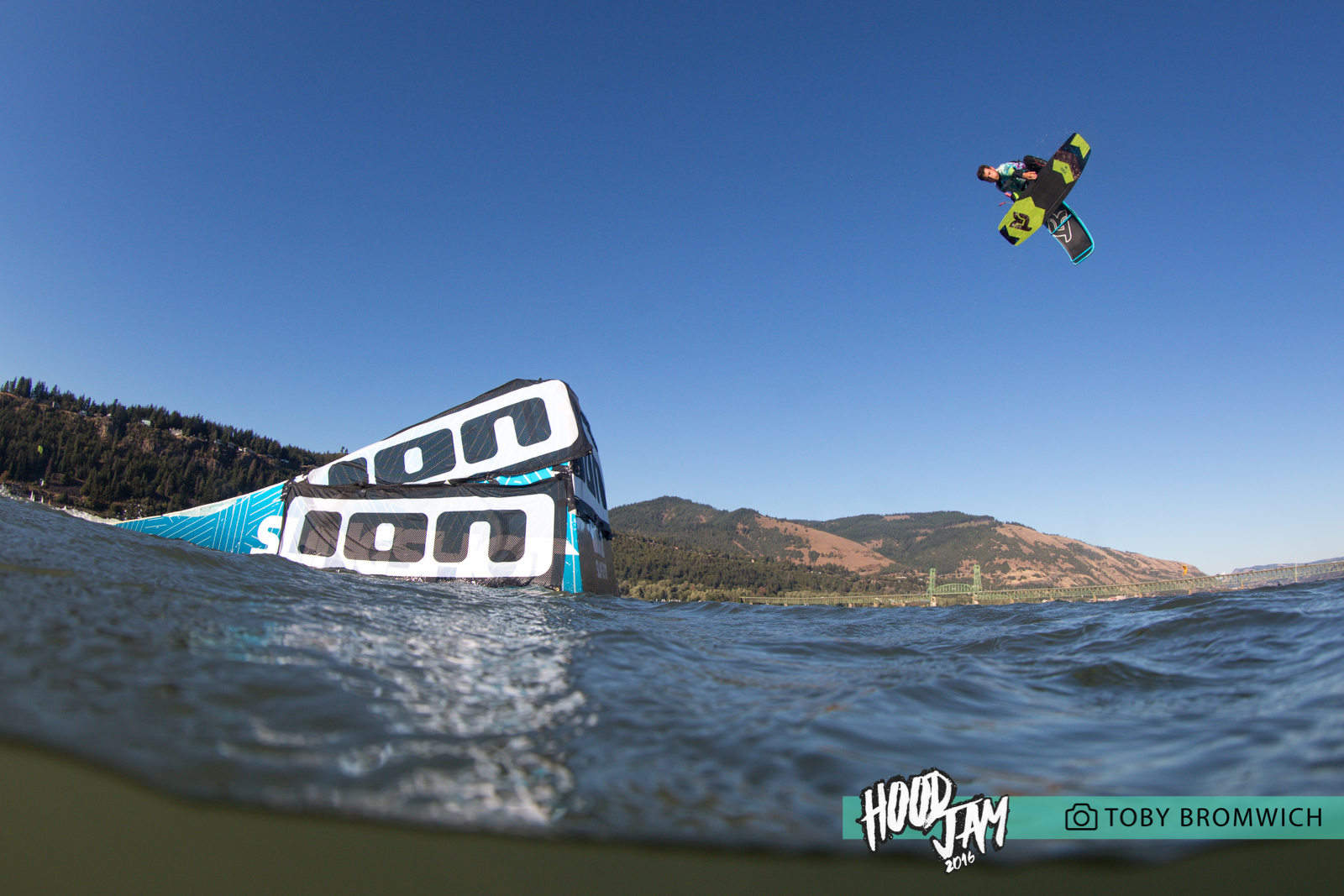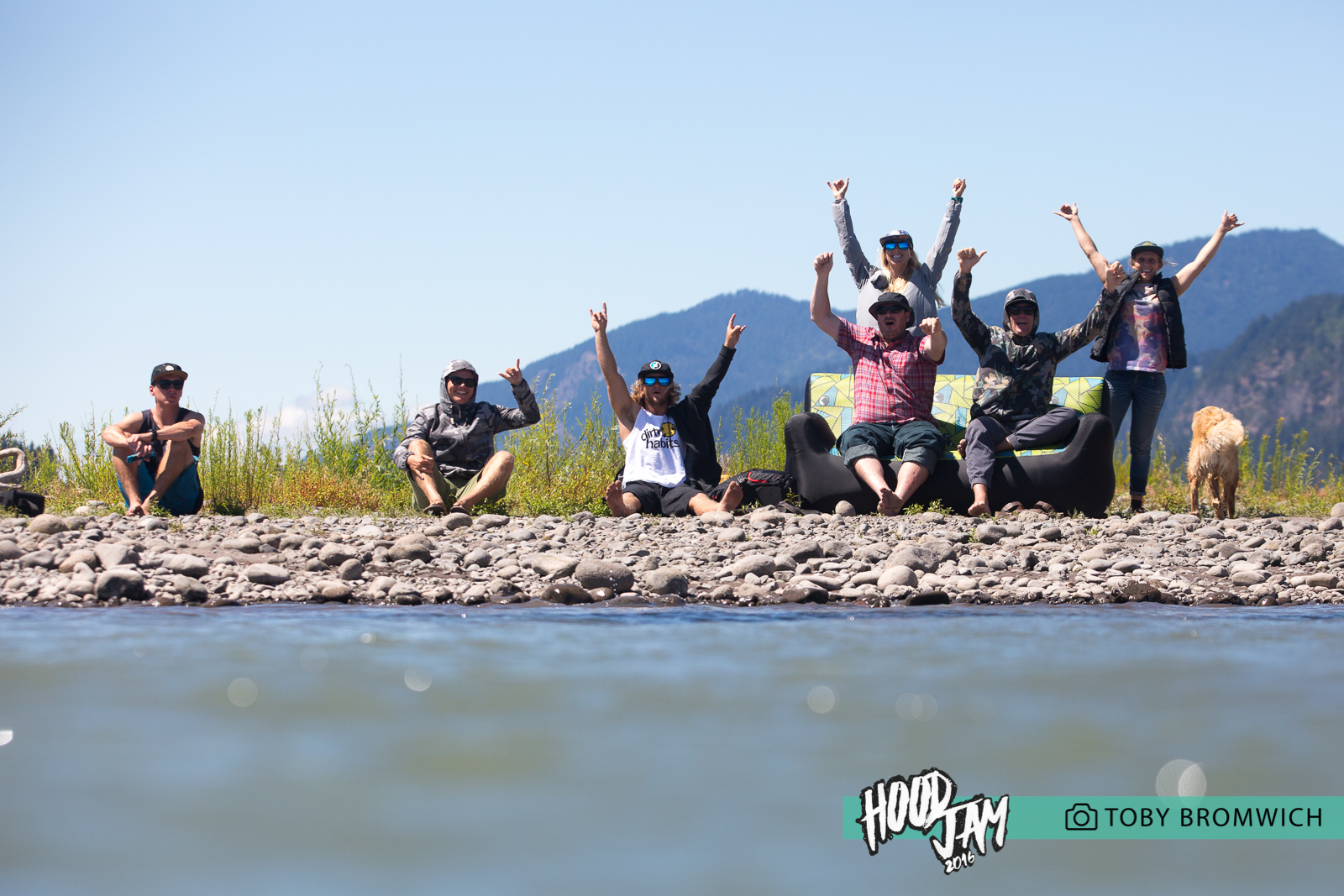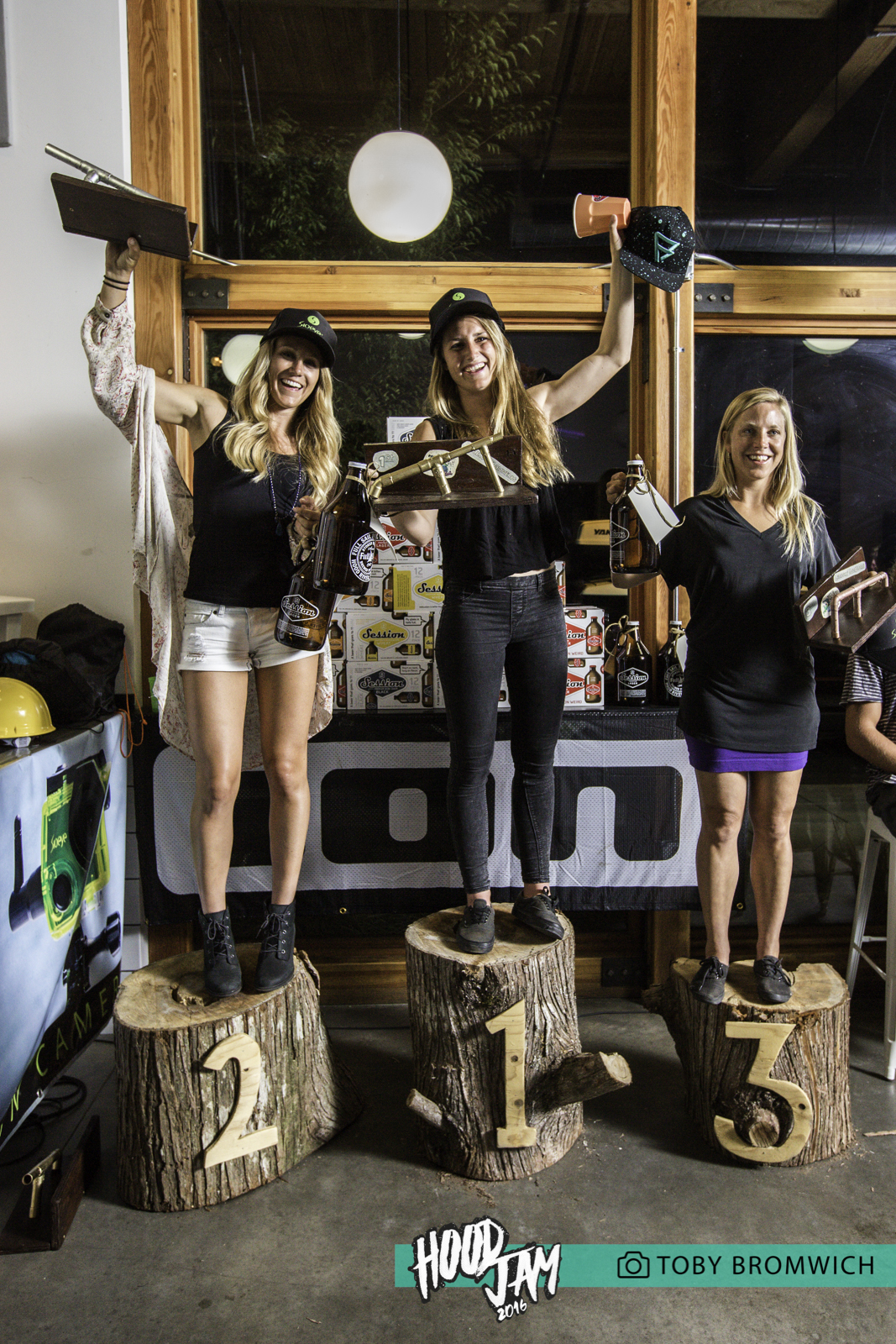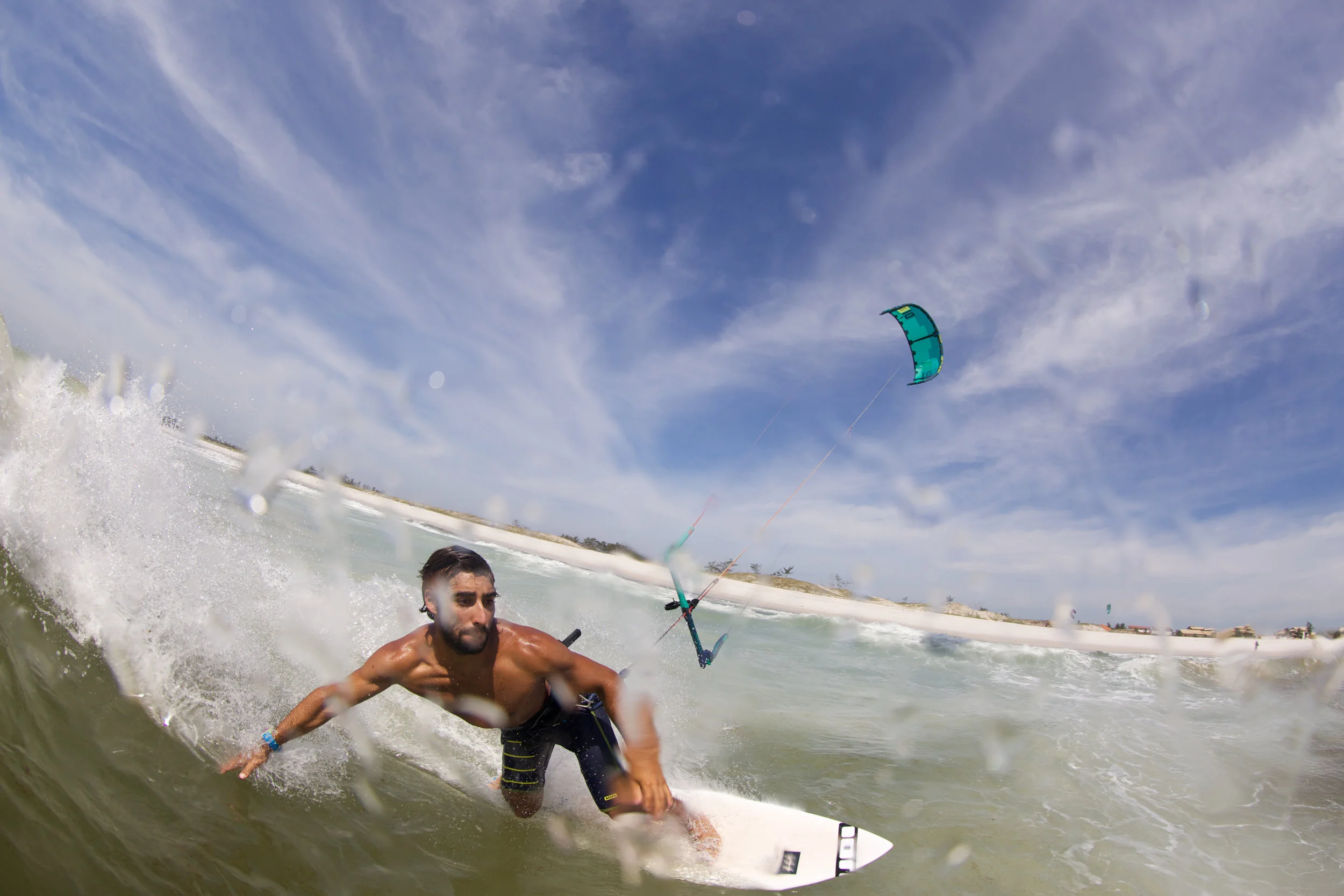This is it. This is the point in the trip where our luck would turn around, I could feel it. So far things hadn’t exactly gone as planned but we were about to change locations and we could only hope for a fresh start.
Rewind to just 10 days earlier and Craig Cunningham, Aaron Hadlow and I were stepping off our respective flights hungry for flatwater sessions and full of ambition to build a few features for our upcoming team shoot. We would have just one week to assess the scene at the kite spot and get to work. Having built his share of sliders in the past, Craig would be taking the lead on the project and had big plans for what we would construct.
The three of us had made our way to Isla de Coche our kiteboarding paradise for the next week and a half. The legendary flatwater at Punta Playa, the main kiting spot on Coche, was situated only an hour’s flight and short boat ride away from the nation’s capitol, Caracas, which is located on the coastal mainland of Venezuela. We were in and out of the capitol city in the blink of an eye, just as we had planned. Currently regarded as one of the world’s most dangerous cities, Caracas faces political instability and heavy drug trafficking. To make matters even more interesting, recent policy changes now advised US citizens from traveling to the country and required special permission to be allowed in.
While the boys wouldn’t have any issues here, hailing from Canada and the United Kingdom, I had had to jump through a few extra hoops in order to attain the necessary visas. For the first time, I paused to consider if it was a good idea to visit a country my government deems so dangerous? I’ve become accustomed to traveling where and when I want and without reserve, but my intuition was telling me to go. With only a few extra questions, the Venezuelan customs agents miraculously deciphered my broken Spanish and soon enough I was bouncing my board bag down an uneven dock on Isla de Coche alongside my North Kiteboarding teammates. It was going to be a good trip.
The next few days, the three of us slipped into an easy routine. Wake up to a traditional Venezuelan breakfast often complete with beans, fried plantains and Arepas (corn cakes) then wander down the 200m stretch of beach from our hotel towards the undeveloped sandy point that would grant us copious amounts of flatwater and smooth wind. From there, we’d take a quick, or long, morning session depending on the day’s list of‘To-Dos’ for the slider build, start checking off tasks for said slider build, kite and repeat. If the first two days were any indication, this trip was off to a great start. The spot was just as good as we expected and we couldn’t wait to have the rest of our crew here and to have the sliders finished.
Somewhere around day three we ran into our first setback. Venezuela as a country has experienced incredible economic and political instability in recent years, because much of their economy is based on oil exports the recent fluctuations in crude pricing has led to rampant inflation with little investment in transportation and energy infrastructure. The small town, San Pedro de Coche, had begun facing frequent power outages, which meant businesses were more often than not closed, making it impossible to get the needed materials within our short time frame.
Challenges like this are expected, and logistical hiccups are bound to come up during international travel, so we pressed on and did what we could. Minor delays began stacking up as construction progress ground to a standstill. Our time in Coche was nearing its end with not a single feature completed and the rest of the photo and film crew having already arrived ready to start shooting the episode. We were starting to sweat.
Craig scrapped the original plan and shifted to plan B. We were now focusing on just two features; a kicker and a unique up-flat-up tube that Craig envisioned as an easy build off of an existing structure being kept at the local kite school. Like all things involving sliders, it had quickly turned into a much more difficult project than we expected, it was looking as though we would get the features in the water with only two full days of shooting. Two days of shooting wasn’t what we had hoped for but it would have to be good enough.
The group was now nine people, having added riders Reno Romeu and Stefan Speissberger as well as our team manager, photographer and two videographers. We sat down to a late dinner to discuss the details of successfully pulling a two-day shoot off for this portion of the trip. It was conceivably possible if we started early, the wind cooperated and everyone rallied hard all day to get it done.
As we walked back to our rooms from dinner, we couldn’t help but feel the pressure building for the day to come. We needed the very best from each team member to pull this off. But as the evening turned to night, Craig started to question his dinner choice. Food poisoning had been on the back of our minds with the frequent power outages and Reno having already succumbed to an unknown foodborne illness he came down with only hours after arriving. But so far everyone else had been okay so it wasn’t given much thought. First it was Craig then shortly behind followed our photographer Toby Bromwich.
Now with half our group severely ill, our task was even more daunting. First thing in the morning, we recruited a few extra hands to help carry everything to the water and pressed on. Craig and Reno managed to drag themselves out of bed and Toby pushed through unmentionable discomfort to keep his camera firing. Despite everyone’s best efforts, after eight days of construction delays and endless frustration we had managed to launch two features into the water, yet nothing was working quite right.
We needed additional anchors for the kicker because of unexpected hectic weekend boat traffic spinning it out of place. The flatbar need more floatation because it was tilting to one side and we needed to figure out a method for digging deeper into the sand to secure the up tube. We were loosing crucial filming time while not one single feature worked like it was supposed to. In hindsight, we should have anticipated this; building features always takes more time, energy, and money than ever expected. This is one of the reasons why it’s so special to score a good park session and also why there are so few slider parks in the world. The countless hours of building and troubleshooting that go into building any feature for kiteboarding takes determination and tenacity. And we were attempting to pull this off in Venezuela, a beautiful country for kiting yet one that at the time was making this mission next to impossible.
It was all we could do that last day in Coche to pull something off. With a little ingenuity from a sickly Craig and our local guide, Christiano, we had a floating flatbar. We jammed the pole out the end and jerry rigged a fitting using extra kite leashes to keep it in place. The kicker was working as well. We had our park and although it wasn’t what we had initially dreamed of, with the unforeseen challenges that loomed we were incredibly relieved and excited.
We rode until the sun sank to the horizon, transforming the sky into a gorgeous palette of deep orange and pink hues before slipping into darkness. We were exhausted, sunburnt and some of us still very much sick. We had ridden our park but it wasn’t time to claim victory yet. We had merely just begun our trip and were headed first thing the next morning for the remote archipelago of Los Roques National Park.
We all needed the change; our group had struggled to maintain the enthusiasm required to accomplish a project of this magnitude. While it may seem like the team shoots produced by the big kiteboarding brands are a vacation for everyone involved, and yes they certainly are incredible, but they also take hard work and motivation. So when we repacked our 20 or so board bags to continue our shooting at the next location, we were excited to get a fresh start for a new segment in our adventure.
Rejuvenated by the prospect of greener pastures, we eagerly loaded up the excessive amount of gear into two wooden boats that would take us back across the channel to Isla de Margarita from which we jump on a small plane to our next stop:
Los Roques National Park. Despite the relatively short distance between the two islands, we endured a second round of customs interrogations. The rapid fire questioning about camera equipment, drones and what seemed to them like a completely unreasonable amount of “stuff” was staved off with a simple airport act commonly referred to as “the stupid tourist.” Lucky for us, this time the performance worked and we were eventually waved off with a mere headshake of annoyance.
We weren’t out of the woods yet. As we checked-in for our small-chartered plane we found that it couldn’t safely carry us as well as all of our oversized gear. Without our carry-ons we had over 1700 pounds of equipment. Luckily, our smooth talking Brazilian teammate, Reno Romeu, negotiated a deal to pack our equipment on a second plane that would arrive the next day. It wasn’t an ideal situation but it would have to do. So far the shooting had been trudging on despite the frequent setbacks. We had claimed a few gems along the way, but we still had so much work to do and we couldn’t afford to keep going at such a slow rate.
The flight to Los Roques was incredible. It was a comfortable 14-person plane and only shortly after takeoff we slipped over the most beautiful chain of islands I’ve ever seen. The contrast in colors was spectacular. Tiny white irregular shaped dots outlined by brilliant turquoise rings with layers of deep ocean blue speckled the Caribbean Sea below. Hardly a palm tree, hill or building were in sight. It looked like we had just discovered kiteboarding heaven.
It was a flatwater utopia for as far as the eye could see; Island after island with hardly anyone or anything in sight. We couldn’t wait for the next day to arrive and hopefully with it, the consistent trade winds known to frequent the area. We stepped off the plane and waited for our airborne baggage mule before settling into our 43 foot luxury catamaran. Setting sail from Gran Roque, the second largest island in Los Roques National Park and the only populated island. We were loaded with everything we needed for our 10 days aboard in the event we decided not to return to port for the entirety of the trip. A likely option since there were endless islands to explore.
Our first stop offered the perfect glassy waters we were after, yet a meager breeze left us unsatisfied with the conditions. Local knowledge told us it would be windy somewhere around the islands everyday, so we sailed on. The next spot providing yet again the picture perfect waters we desired but the wind was merely a tease, luring us to the water only to feel it’s power lacking that last extra few knots to give it what we needed. What quickly ensued seemed to be a game of cat and mouse. We sailed around the islands in a steady 12kt breeze. The perfect amount of wind for a leisurely and quite speedy sail but just below that coveted amount of wind for the hardcore freestyle action we craved.
Day after day, we sailed, forecasted and chased our best-guessed predictions. We covered countless miles of pristine marine territory, constantly in awe of its raw and unaltered beauty. Despite the uncooperative wind conditions, we couldn’t help but feel fortunate for the opportunity to simply experience a place so serene. And we did get on the water here and there. The name of the game was ‘be ready’. At all times, our gear would be rigged ready to go at the slightest bump in wind speeds. Glued to the anemometer, any spike over 15kts meant all riders and cameras were out making the most of every minute.
In a way, it made the time spent kiting even more special because you never knew how long it would last. There wasn’t time to hold anything back so each session was full on with 100% commitment into every trick. You could see the energy in each athletes riding and as a result, I think we saw the best come out in everyone.
Although it felt as though the universe had been working against us at almost every step of the way, finishing off our two-week trip, we had hard drives full of footage to use for North’s campaigns over the next year. We had ventured out to a place lesser known in the kiteboarding world despite the warnings and were returning having experienced kindness and generosity from the locals, success with creating new features under challenging conditions, as well as a rare opportunity to live amongst the remote islands of Los Roques.
Text as published in The Kiteboarder Magazine May 2017













